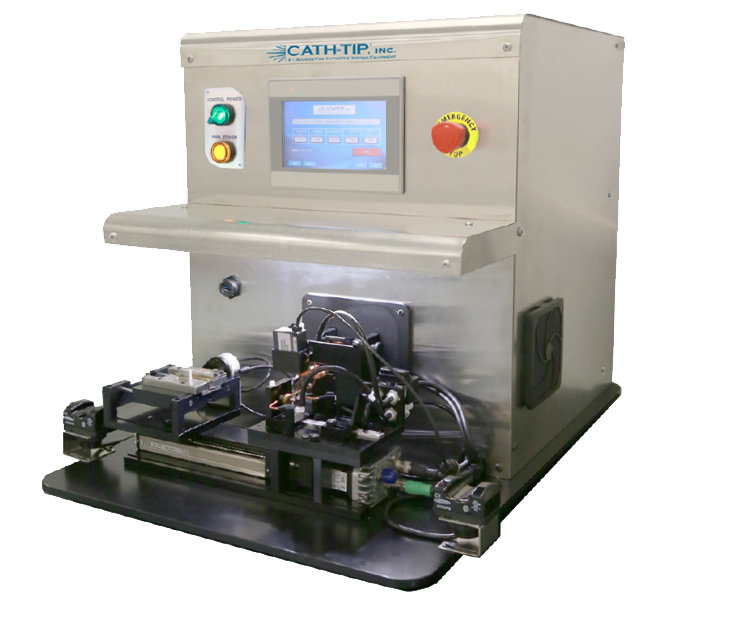Image source: Engineering By Design
The medical device industry is constantly evolving, and within this sphere, the development and refinement of catheter tipping processes are crucial. As we enter 2024, it’s essential to understand the challenges faced in catheter tipping quality control and the innovative solutions implemented to overcome these hurdles. This comprehensive guide delves into the complexities, breakthroughs, and future prospects of quality control in catheter tipping, a field that directly impacts the efficacy and safety of medical procedures.
Contents
Understanding Catheter Tipping
Catheter tipping involves the modification of the catheter’s tip to make it more functional and patient-friendly. This process often requires the precise application of heat to mold the tip into the desired shape, ensuring it can navigate the vascular system without causing harm or discomfort. The quality of this process is paramount, as any inconsistencies can lead to severe complications during medical procedures.
Challenges in Quality Control
- Precision and Consistency: The foremost challenge in catheter tipping is achieving consistent quality across batches. Given the minuscule dimensions and the intricate designs required, ensuring uniformity in each catheter tip is a tall order.
- Material Compatibility: Different catheter materials react differently under heat and stress. This variability can lead to quality control issues, especially when dealing with innovative materials that enhance patient comfort and procedure efficacy.
- Equipment Limitations: Traditional equipment may only sometimes offer the precision or control needed for advanced catheter designs. This can lead to defects or variations in the tipping process.
- Regulatory Compliance: Keeping up with changing regulations and standards is a constant challenge. Each modification in the process or material must meet stringent regulatory requirements to ensure safety and effectiveness.
- Detecting Defects: Identifying defects, especially those that are microscopic or internal, is a significant challenge in quality control. Non-destructive testing methods need to be both sophisticated and sensitive.
Innovative Solutions
In response to these challenges, the industry has seen several innovative approaches:
- Advanced Automation: Robotics and automated systems are increasingly being employed to enhance precision and consistency. These systems can handle the delicate and repetitive nature of the process, reducing human error.
- Material Science Advances: Research into new materials and coatings is paving the way for catheters that are easier to tip while maintaining or enhancing performance. These materials are designed to react predictably under specific conditions, simplifying the tipping process.
- Cutting-Edge Equipment: New generations of catheter tipping equipment offer greater control, accuracy, and flexibility. Laser-based systems, for example, provide precise control over heat application, allowing for more intricate tip designs.
- Real-Time Quality Monitoring: Integrating sensors and imaging technologies into the manufacturing process allows for real-time monitoring of the tipping process. This helps ensure consistency and significantly reduces the time taken to identify and rectify defects.
- Compliance Software: Software solutions are now available to help manufacturers stay updated with regulatory changes and ensure compliance throughout the design and production process.
- Advanced Testing Methods: Developments in non-destructive testing methods, such as high-resolution imaging and ultrasonic testing, have made it possible to detect even the most minute defects without damaging the catheter.
Future Prospects
Looking ahead, the future of catheter tipping quality control seems geared towards further integration of AI and machine learning. These technologies promise to enhance every aspect of quality control, from predictive equipment maintenance to more sophisticated defect detection algorithms. Moreover, as 3D printing technology matures, it could offer unprecedented customization in catheter design, which in turn will require even more advanced quality control mechanisms.
Conclusion
The challenges in catheter tipping quality control are significant but manageable. Through a combination of technological innovation, research in materials science, and a keen focus on regulatory compliance, the industry is making strides in ensuring that catheters are more effective, safer and more accessible. As these technologies continue to evolve, we can expect even more remarkable advancements in the quality and functionality of catheter tips, ultimately leading to better patient outcomes.
In summary, the world of catheter tipping is at an exciting juncture. The challenges are clear, but so are the paths to overcoming them. With the collective efforts of engineers, scientists, and healthcare professionals, the future of catheter tipping and its role in enhancing medical procedures looks brighter than ever.
The Daily Buzz combines the pursuit of interesting and intriguing facts with the innate human desire to rank and list things. From stereotypical cat pictures to crazy facts about the universe, every thing is designed to help you kill time in the most efficient manner, all while giving you something to either laugh at or think about!
